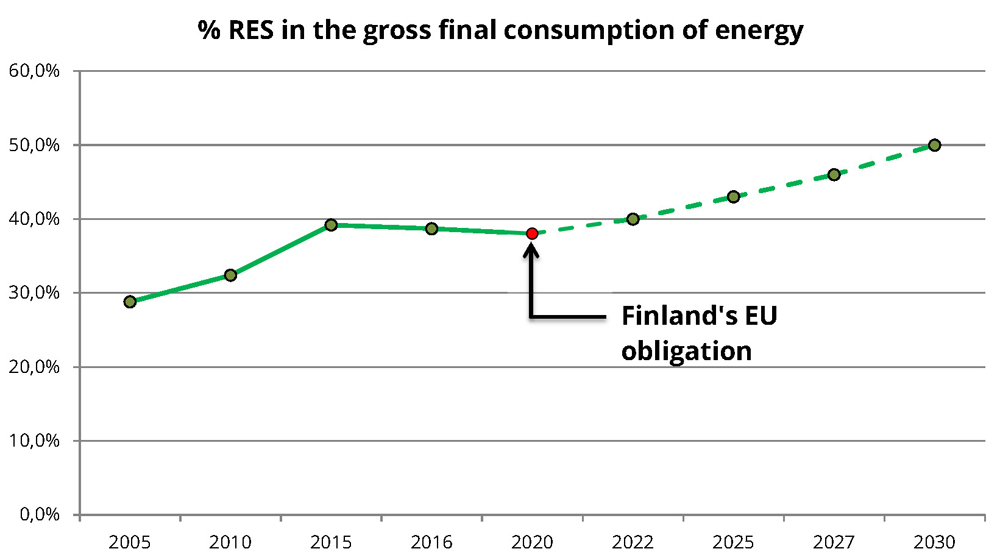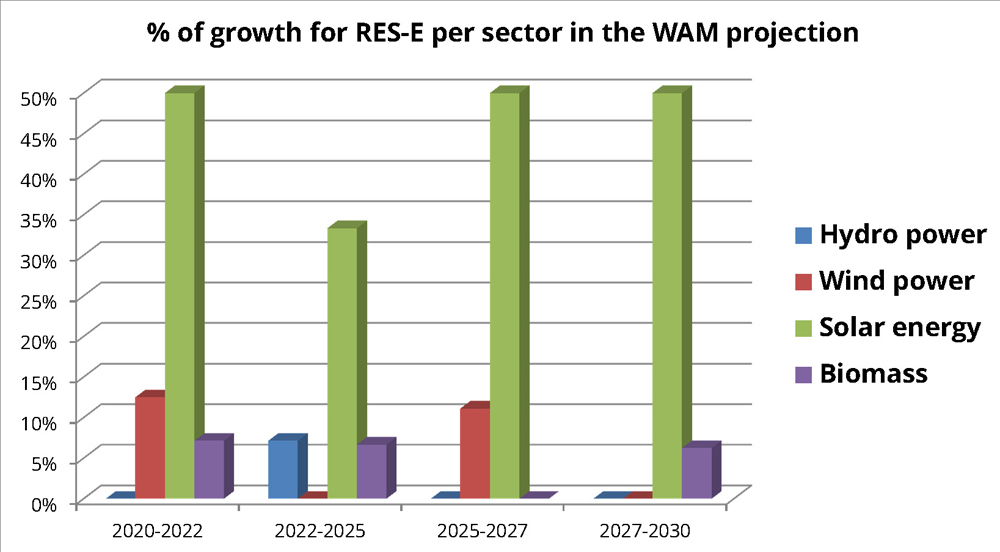Finland, with its plan for green energy, wants to further increase the impact of renewable energies on gross final energy consumption.
RES in Finland, a reference point for Europe
At the moment, this country appears as the second European power for the use of renewable energy sources. As a matter of fact, in 2017 the 40% quote was reached. As it can be seen from the graph below, we have gone from 28.8% in 2005 to 38.7% in 2016.
The national target in the climate strategy for renewable energy, set for 2030, is 50% on final energy consumption. This percentage is Finland’s response to the 32% binding target on renewable energies in line with EU-imposed directives.
Finland is in fact one of the main countries in the world for the use of renewable energy sources. The most important ones are bioenergy and wood-based fuels. In addition to these, Finland uses hydroelectric power, wind power, heat pumps and solar energy. Renewable energy is one of the most significant means of achieving Finland’s energy and climate targets.
The growth of renewable energy also passes through solar PV
Although Finland is already the second European country for of use of renewable energy sources in gross final energy consumption, it is also setting different laws and new incentives, to ensure a continuous growth. Expectations say it will continue over the next years, up to reach the 50% target by 2030.
As can be seen from the following graph, the 4 renewable sources that this country uses for the electricity supply are wind, solar, biomass and hydroelectric energy. The sector that will have the most significant growth (in percentage terms) will be solar energy, which is expected to increase from 200 GWh in 2020 to 900 in 2030. Biomass will reach 17,000 GWh in 2030, wind energy will cover 10,000 GWh of consumption, and finally, hydroelectric sources will provide 15,000 GWh of energy.
For the purpose of stimulating the growth of these sectors, the feed-in tariff system for the production of electricity from renewable sources was introduced the 25th March 2011. The aid scheme concerns government support for electricity production based on wind energy, biogas, woody and residual biomass.
In May 2018, the Parliament approved the act concerning the amendment of the law on aid for the production of electricity from renewable energy sources (laki uusiutuvilla energialähteillä tuotetun sähkön tuotantotuesta annetun lain muuttamisesta 441/2018). The system is based on a tender process and investments in different sectors of renewable energy, which compete with each other in order to ensure competitiveness in all sectors, lowering the cost/efficiency rate.








